Alba is a lesser-known culinary capital in Piedmont, Italy, the capital of the UNESCO Heritage Site of Langhe, a historical center, and a vibrant community.
My mother and I parked our car at Alba’s train station. If there’s one thing you should know about Italy, it’s that the safest way to avoid a fine for entering into a historic area or to avoid paying for parking is to park at the train station. But, parking the car at the train station sometimes means parking in the not so beautiful part of the city. We walked into the town of Alba starting with the outskirts of the city. Modern, tall housing residences…this was not what I expected when I had heard great things about Alba, Italy. We were tempted to turn around, but if there’s one thing my mother and I knew was that the true “historic center” was always next to the duomo or cathedral. So I kept my eyes glued to my Google Map and tried to lead the way.
Finally we broke through the outskirts. It was obvious we had entered the city center. Cobblestone roads, lively labyrinth-like streets, glass storefronts rich in truffles, plenty of food, local artisan products, and palaces rich in Gothic-Romanesque architecture lined the tops of the streets. Ah yes, this was the Alba I had heard so much about—an elegant town dominated by a pink-bricked cathedral. Sveva, take note: Blindfold yourself to the outskirt of the city, as you walk street by street into the city center, it’s like peeling back the layers of an onion until the core is exposed.
<h3 id=”what”>
What is Alba known for?
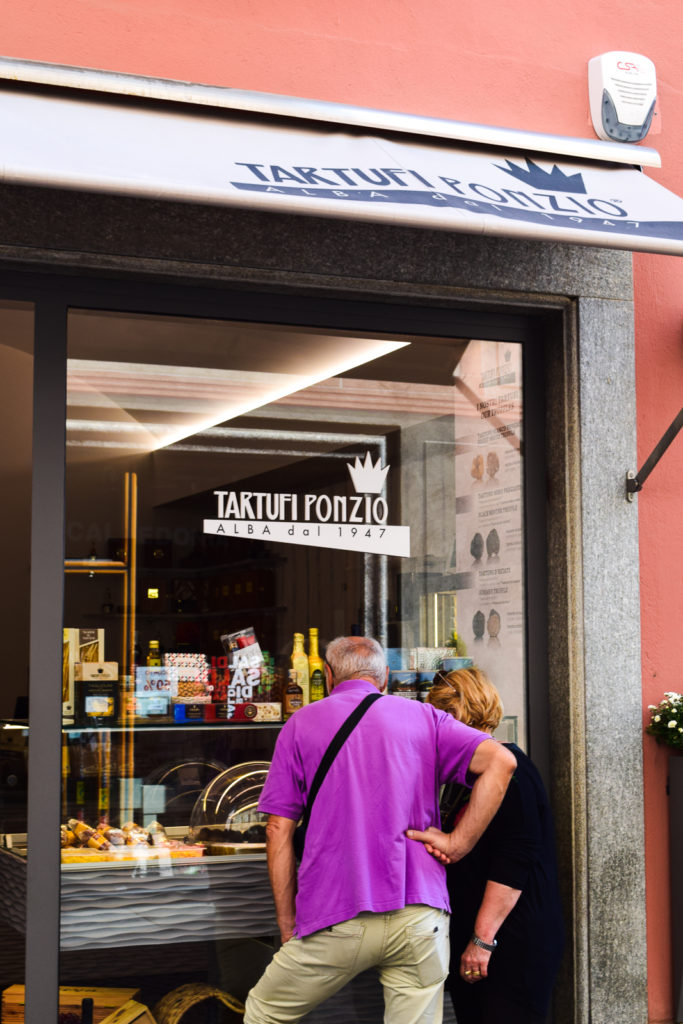
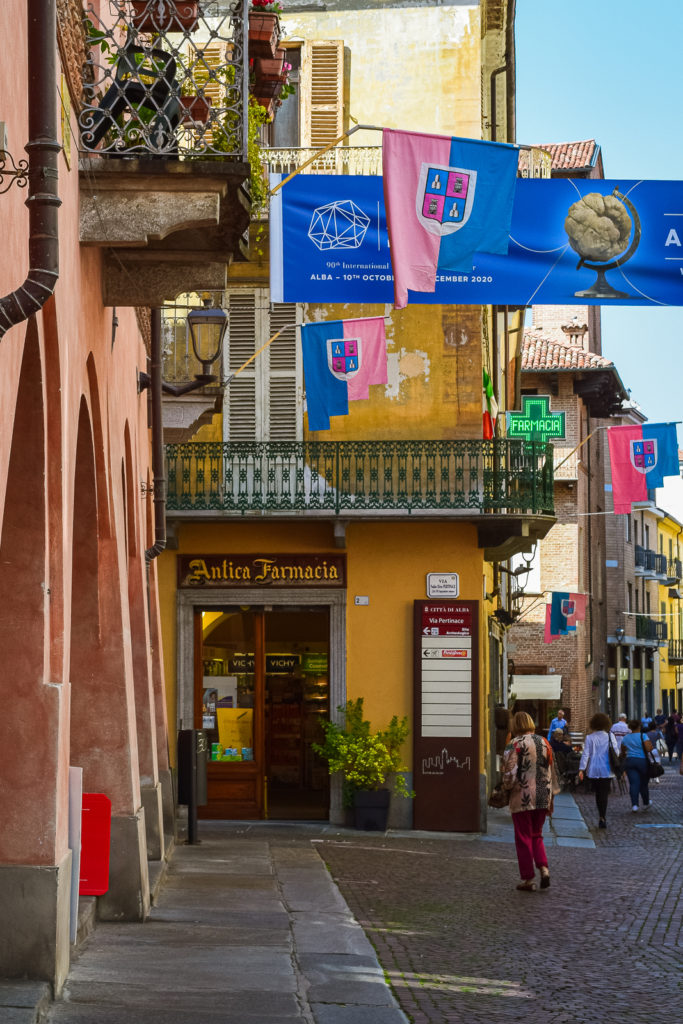
Alba is one of the biggest towns and the capital of the UNESCO World Heritage region of Langhe in Piedmont. It is known as the culinary capital of Piedmont most famously for its white truffle fair (or tartufi) held on weekends during the month of November, as well as it’s peach production and, of course, wine. In fact, Langhe-Roero has over 15 Michelin Starred restaurants and the majority of them are in Alba. Add on the fact that Nutella and Ferrero Rocher come from Alba and you’ve got yourself the definition of an Italian culinary capital that has a lot to offer.
<h3 id=”catedrale”>
Catedrale di San Lorenzo
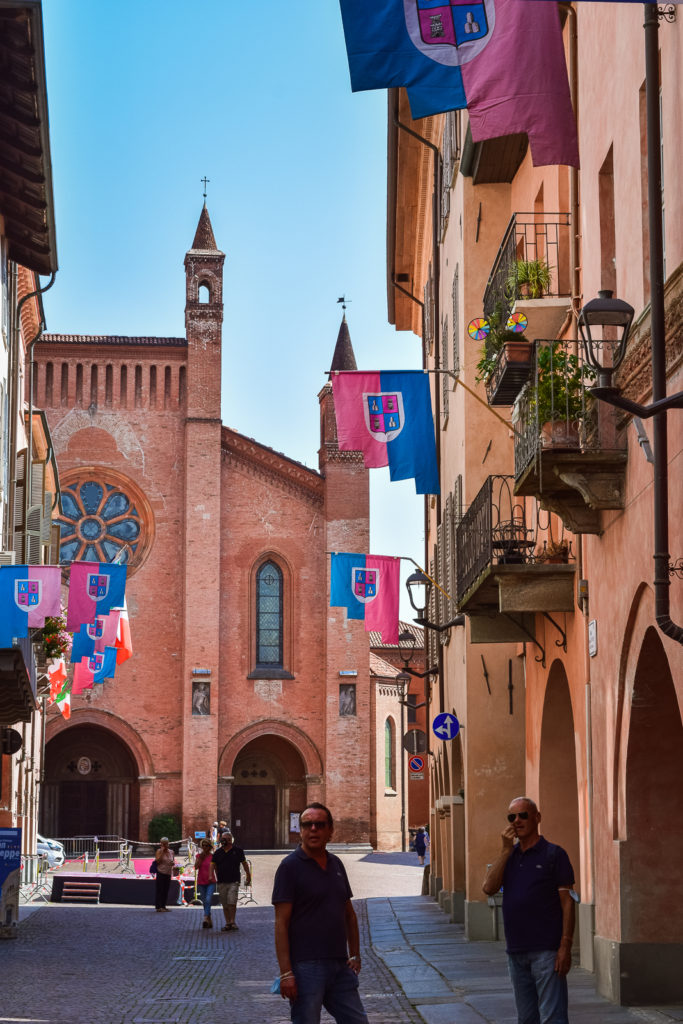
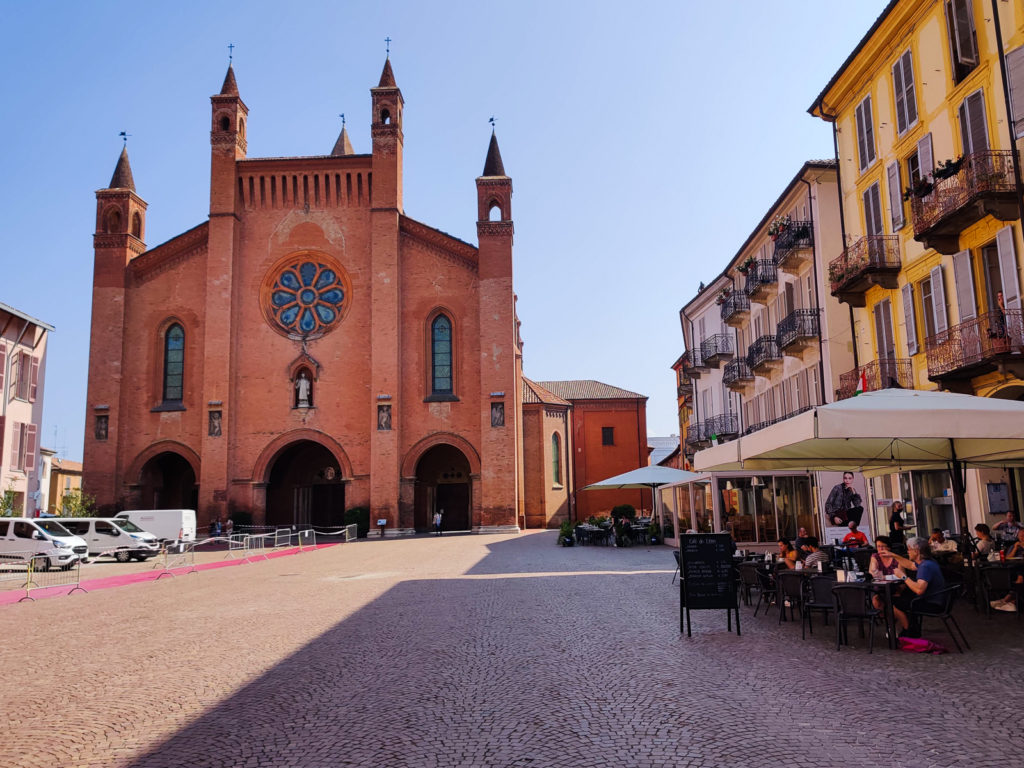
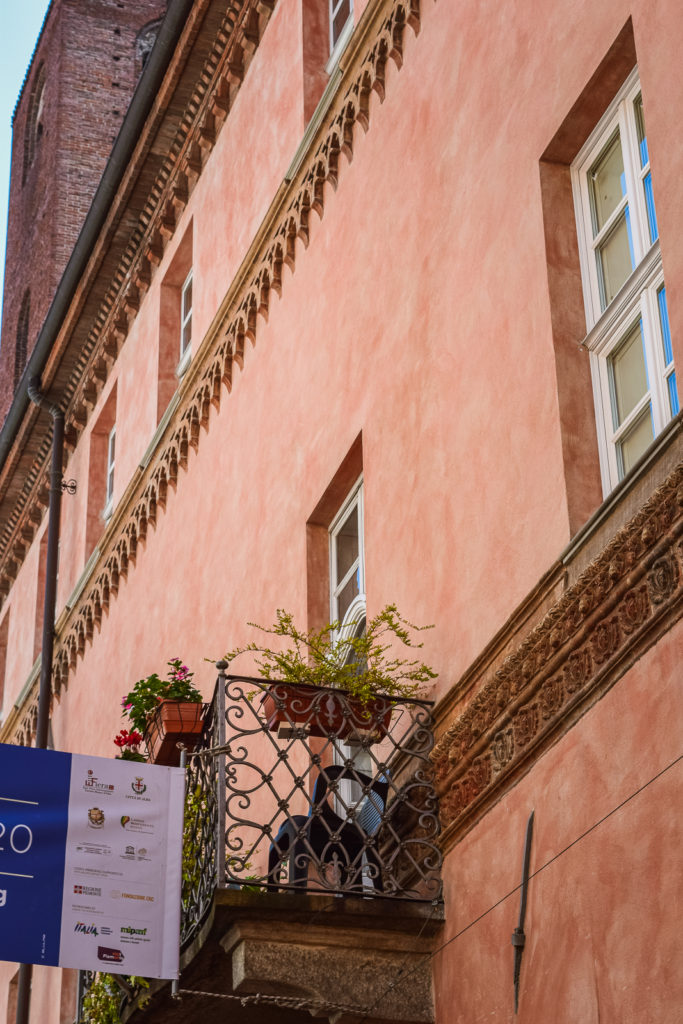
The marvelous architectural streets of Via Cavour and Via Vittoria Emanuele gravitate you towards Piazza Risorgimento where you find Catedrale di San Lorenzo, or Saint Lawrence Cathedral. This stunning red brick cathedral is unlike any church I’ve seen in Piedmont. Its color is what really struck me, the warm pinks and reds, alongside its arches and stained glass windows. It even has an underground museum that allows you to discover Alba’s ancient past and ties to the Roman era. Alba was fought over for many years since it’s close to the border of Italy, France, and Switzerland. It was involved in many games of tug a war until it was owned by the Savoie family and became part of Italy during the unification. It’s long history remains in these underground museums.
<h3 id=”cavour”>
Via Cavour: Medieval Towers and Panetteria
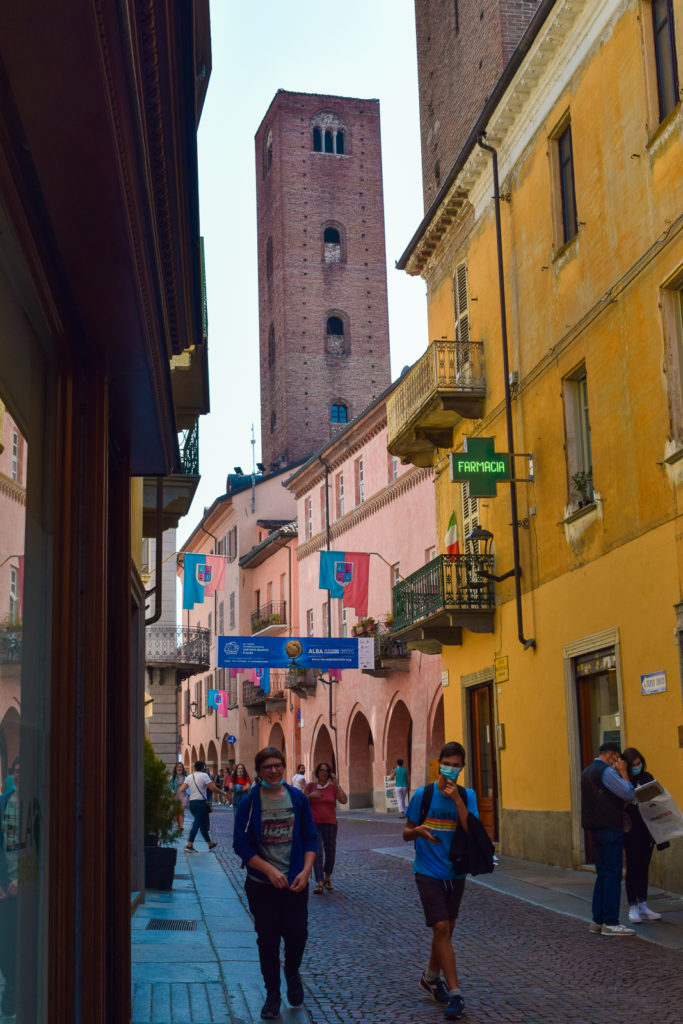
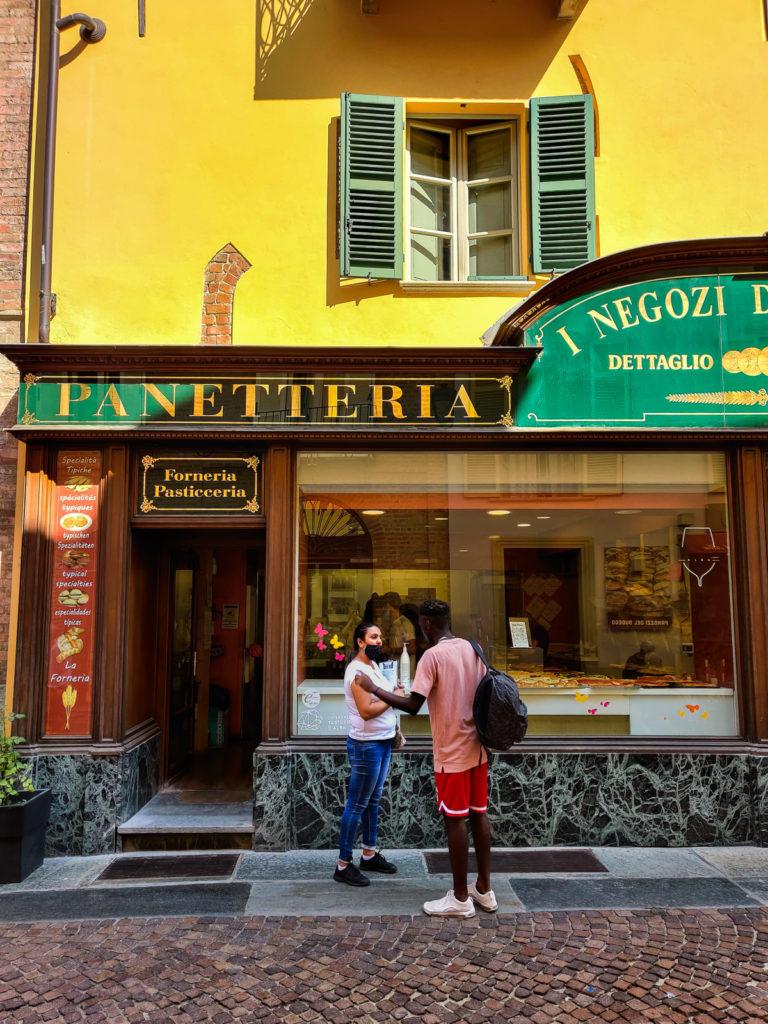
We made our way down Via Cavour, named after one of the key unifiers of Italy and the man who helped jumpstart the famous Barolo wine production. If you look up you’ll see a sky full of medieval towers breaking through the sky every 100 meters or so. The “town of 100 towers” is one of Alba’s many nicknames. Medieval towers served multiple purposes. They were built to represent the power of noble families, protect the city, and store agricultural products. Today, only ten of them still exist, but it’s still enough to keep the skyline busy.
My gaze was pulled from the sky to a bumblebee yellow panetteria, or bakery, with moss green open window shutters, a large display case, wrapped in a black and green slab of marble. It wasn’t the color that drew my attention, but the wafting smell of baked goods. My mom and I went in and got a few bread rolls to take home for dinner. My favorite part about Italy? The price of bread. Three bread rolls are like .30 cents.
<h3 id=”lunch”>
Lunch: Piadina with Truffles, Gina la Piadina
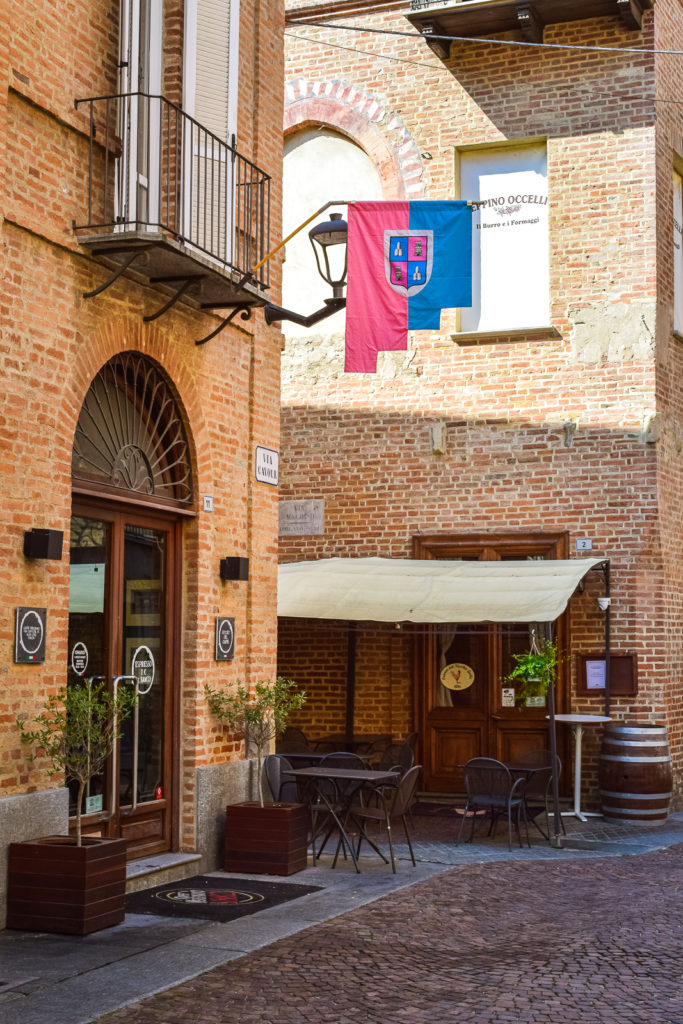
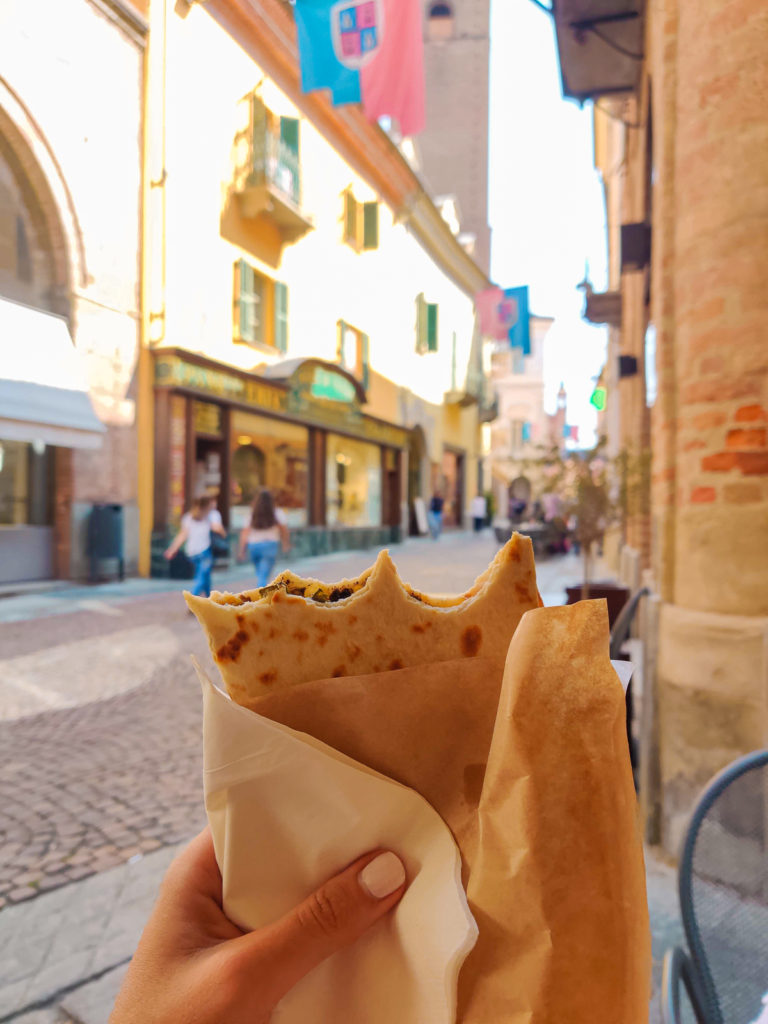
Having just left the wine town of Barolo and being 12PM, we were in search of food. Nothing too heavy since it was a hot day, but we still wanted it to be unique to Alba. My mother and I saw two women walk by with a piadina in hand–a flat bread of sorts, like a tortilla in Italian version. That’s what we wanted. We asked them where they got it and they sent us to the bottom of Via Cavour. We saw a queue forming at the end of Via Cavour, it was prime lunch hour for school students and they were lining up outside of a place called Gina La Piadina. That’s exactly what we wanted, a piadina from Romagna made with local Alba ingredients.
In order to make it unique to Alba, I ordered the piadina with mozzarella, grilled zucchini, and truffle cream. I mean, I had to try truffles, I was in Alba. What makes Gina La Piadina unique, aside from there many ingredients and options, is the fact that they make piadine with different types of wheat (which I had never seen done before). You have the option of having your piadina made with regular grain or whole grain farro. We took our piadine and sat in a corner on Via Cavour watching as people walked by. The modest amount of truffle cream was enough to add a sharp intense flavor of the truffle here and there without overcoming the piadina’s flavor.
<h3 id=”bar”>
Bar Pasticceria Cignetti: Torrone and Gianduiotto at One of the Oldest Bars in Alba
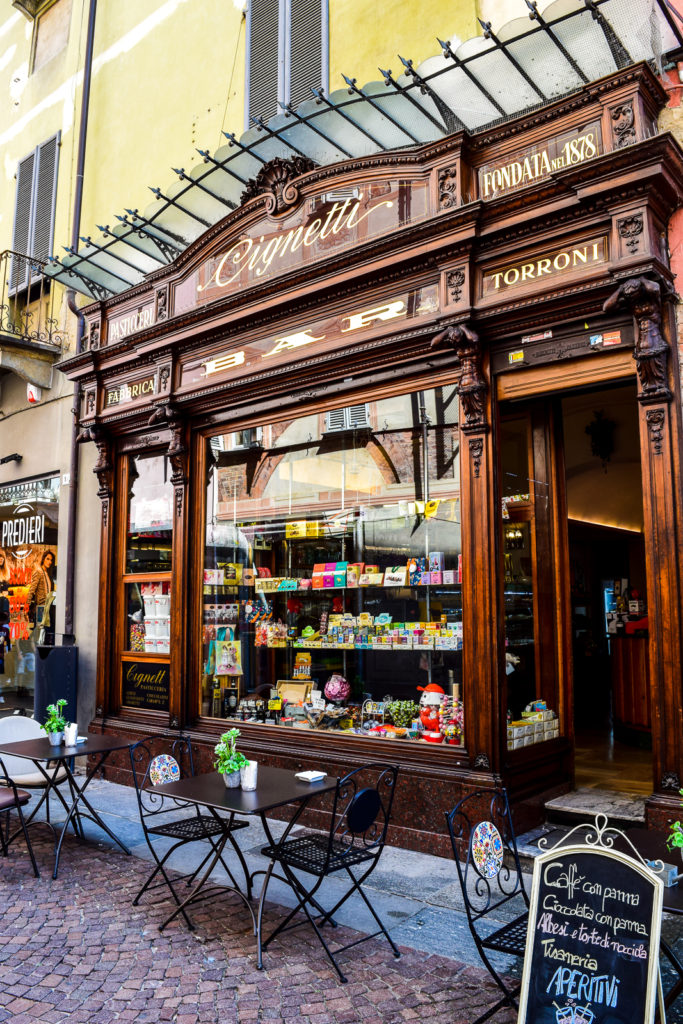
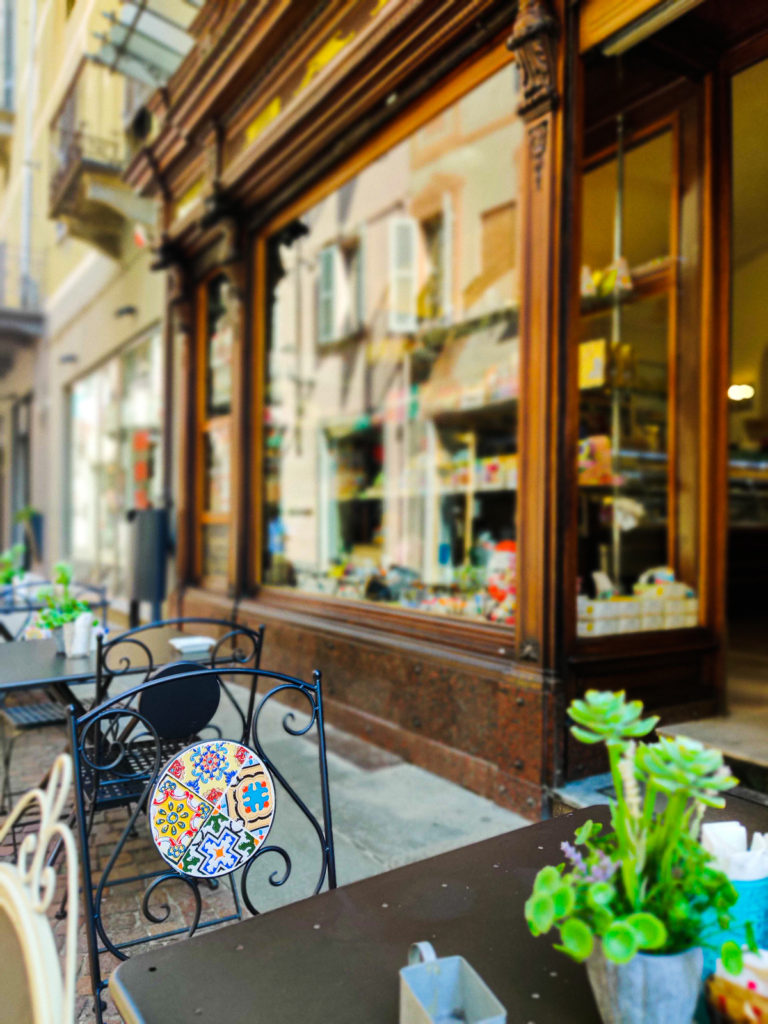
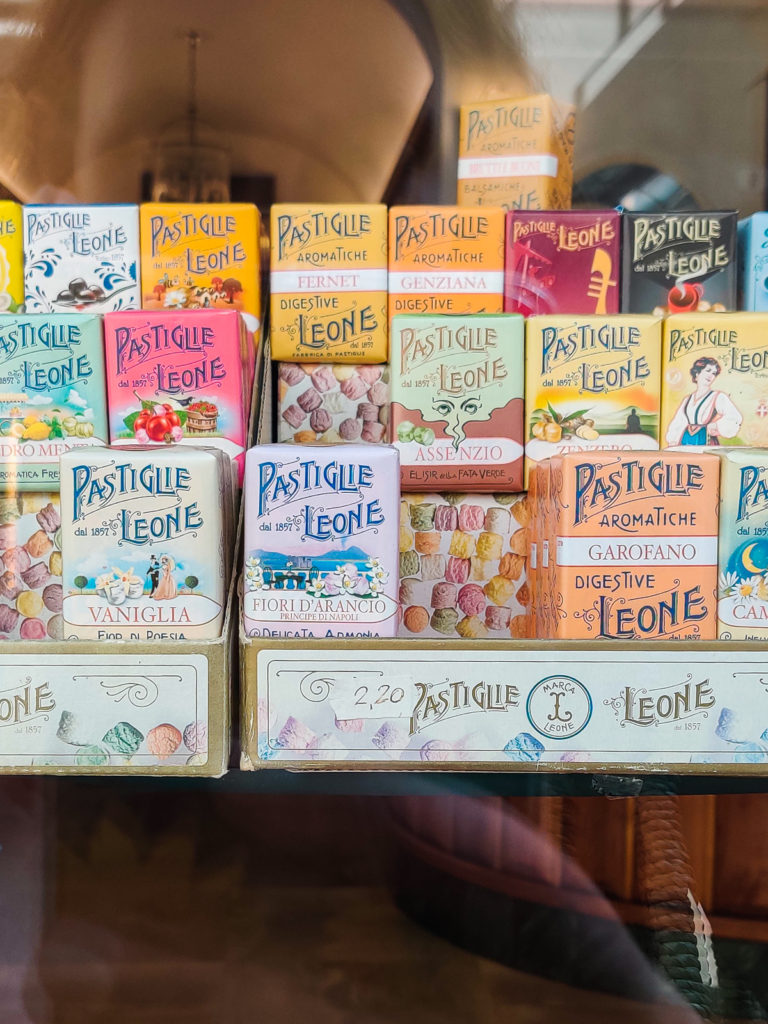
As we walked past the Cathedral and down Via Vittorio Emanuele, we came across one of the oldest bars in Alba founded in 1878 and still standing to this date: Bar Pasticceria Cignetti. It’s very easy to spot as you walk down the main street. Cignetti has a classic Art Nouveau façade, display case packed with classical Italian old world candies and chocolates (like the ones my grandma used to give me), and bistro chairs with ceramic decorations. Since Alba is home to the famous chocolatiers and institutions of Nutella and Ferrero, it goes without saying that the old bar is famous for their hazelnut nougat or torrone, Barolo, and Moscato chocolates. On colder months, the thick hot chocolate is a can’t miss.
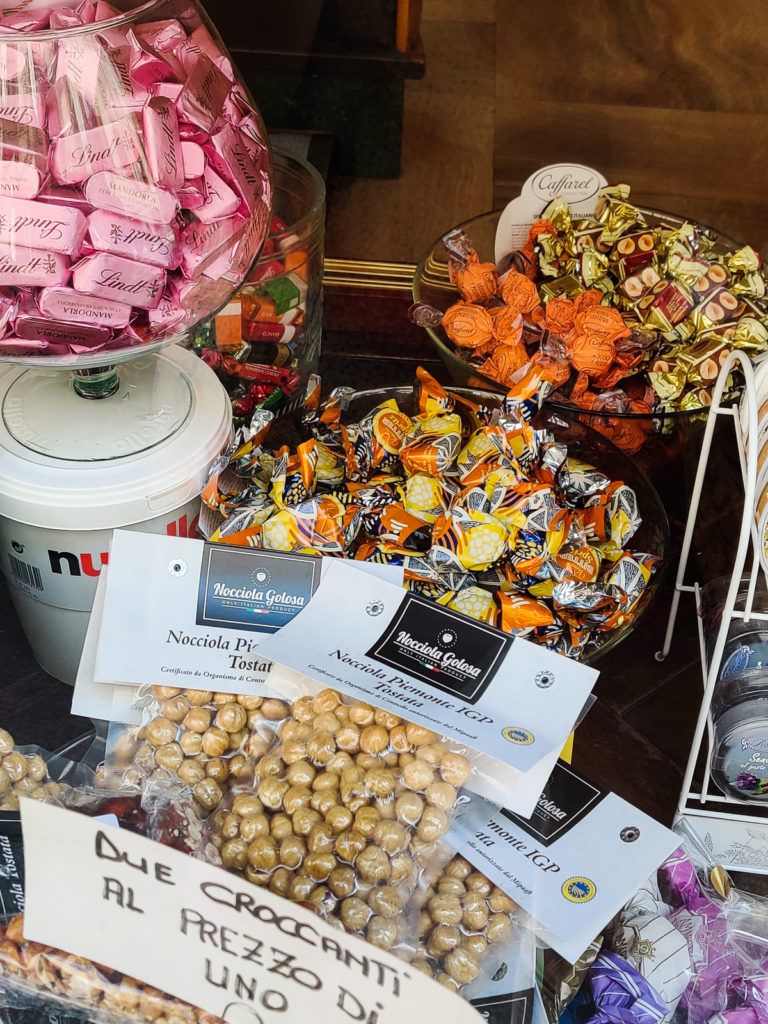
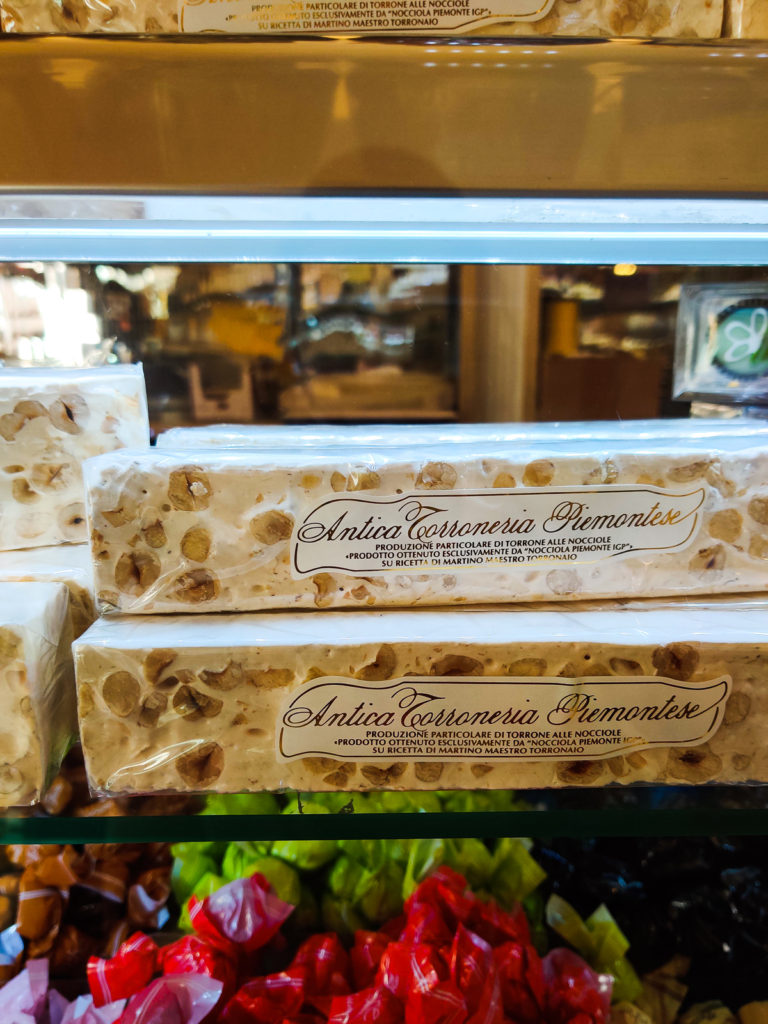
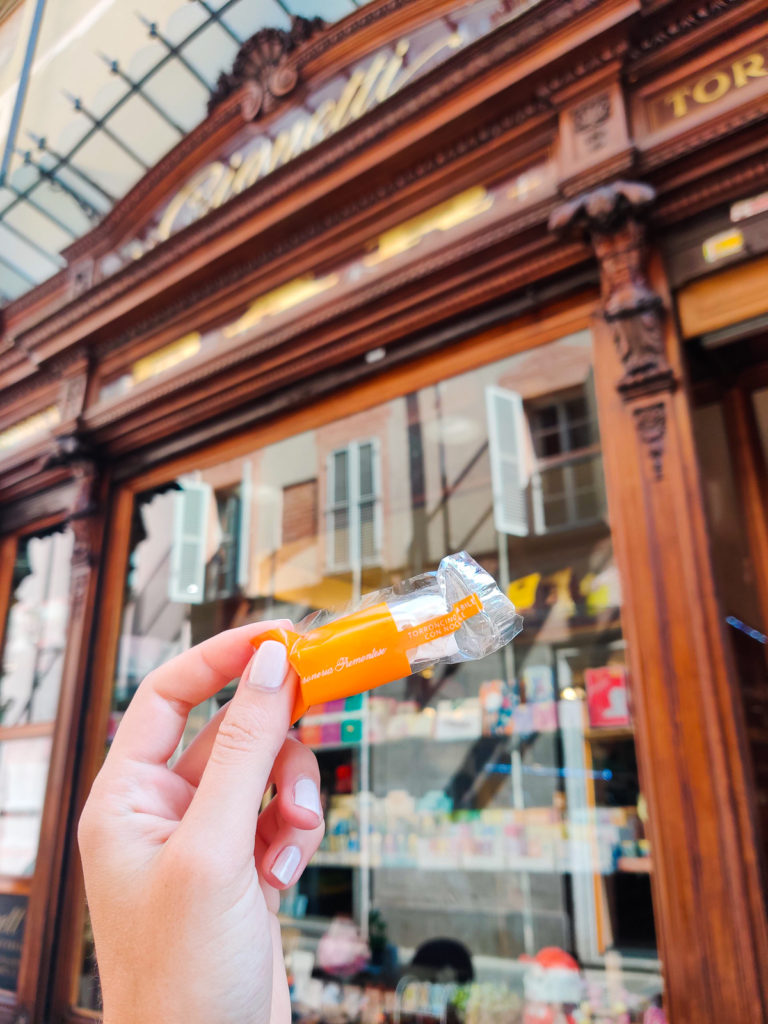
I had checked truffles off my list, but now it was time to bite into the sweet stuff from Alba, their traditional dolci. Alba is home to the nougat or Torrone and legendary Gianduia chocolates. We stepped inside and found ourselves immersed in an authentic Piedmont atmosphere dipped in antique wooden and velvet furniture. Their classic dolce is the bite-sized Torrone with hazelnuts from the Langhe region pictured on the upper right. You can choose from two types of Torrone the classic crumbly Torrone or newer soft Torrone. Of course, I went for the classic crumbly. The “King of Torrone d’Alba,” the Antica Torroneria Piemontese produces the torroni at Bar Pasticceria Cignetti.
I also purchased a handful of mine and my mother’s favorite chocolates, Gianduia chocolates or simply gianduiotto, to go. The go-to brand for these is Caffarel, small cigarette like chocolates hugged in a glistening gold wrapper. They cost an arm and a leg in the US and are expensive in Italy as well, but always less than the US. They are the definition of perfect, flawless chocolates in my mind. Gianduia is a blend of milk chocolate and ground hazelnuts. This small chocolate came to be when cacao prices were high. In order to extend chocolate supply, chocolatiers through hazelnuts in the chocolate to increase production, and well, it worked. The chocolate has a smooth, soft, melting texture that gives it a mouth-watering finish that remains embedded in your mind.
<h3 id=”gelato”>
Alberto Marchetti Gelaterie
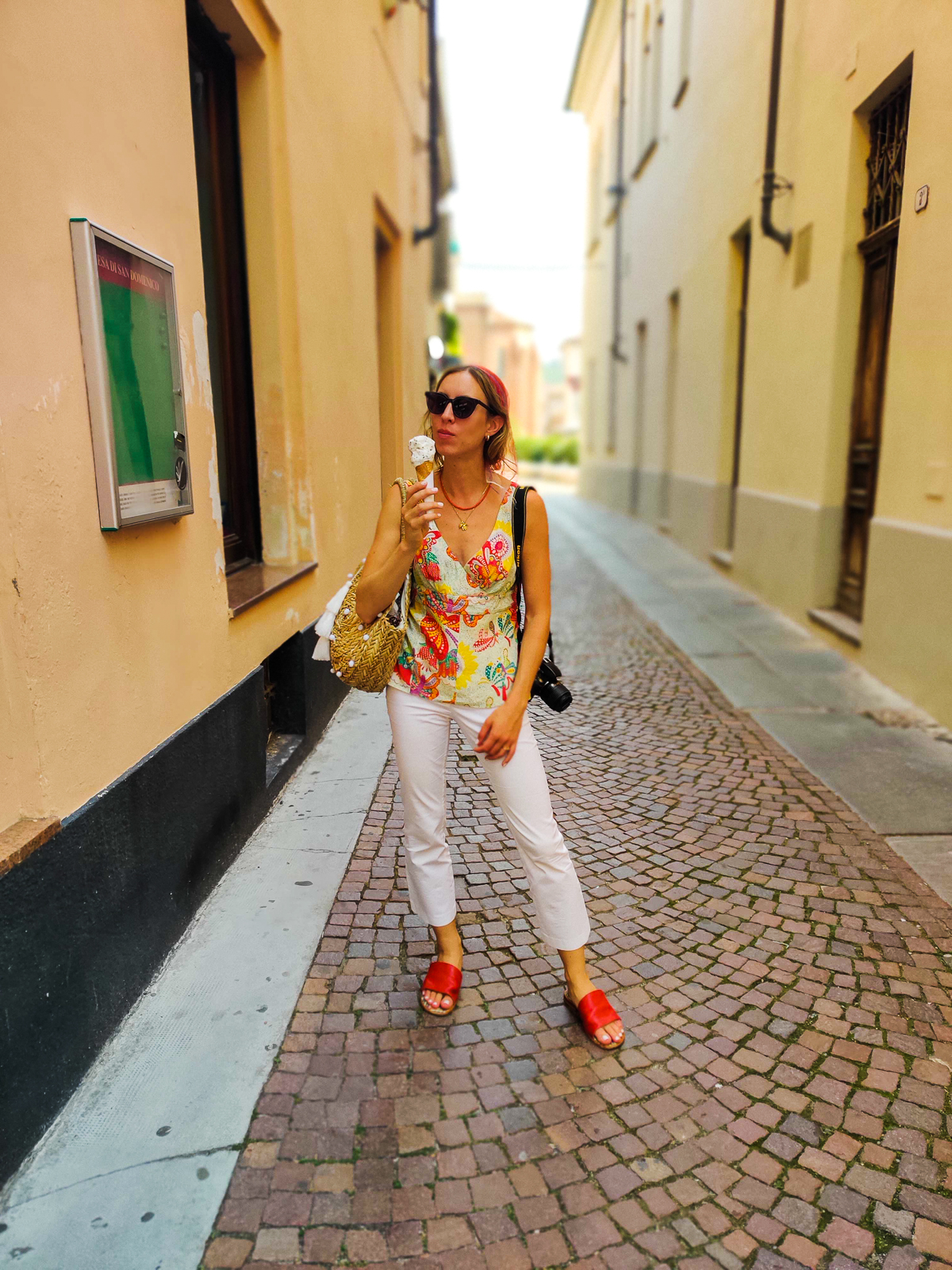
While I was craving classic chocolates, on this hot September day my mother was craving gelato. Just a few feet down from Bar Pasticceria Cignetti was Alberto Marchetti Gelaterie. Gelato has been in Alberto Marchetti’s blood since he was a child. When he got older, he started his own business. As he makes his way through Italy, he personally chooses the gelato ingredients and where they’re sourced from. He goes to the fields first-hand and watches where the fruits are harvested and where the milk is made. He treasures the concept of Slow Food in every flavor of gelato he makes.
I stole a taste of my mom’s stracciatella, basically chocolate chip, gelato. It was icy and light. The milk wasn’t a heavy cream bomb that sat in your belly, it was easily digestable and didn’t leave you with that thirsty pasty feeling in your mouth that you get after eating low quality gelato. You could tell the products were top notch.
If this is all I was able to do with just a few hours in Alba, imagine what you could do if you had a few days? You could taste your way around the city, take your time in acquainting yourself with the slow food movement, the cities pace of life, history, people, and take day trips around the wine region.
Get my look!
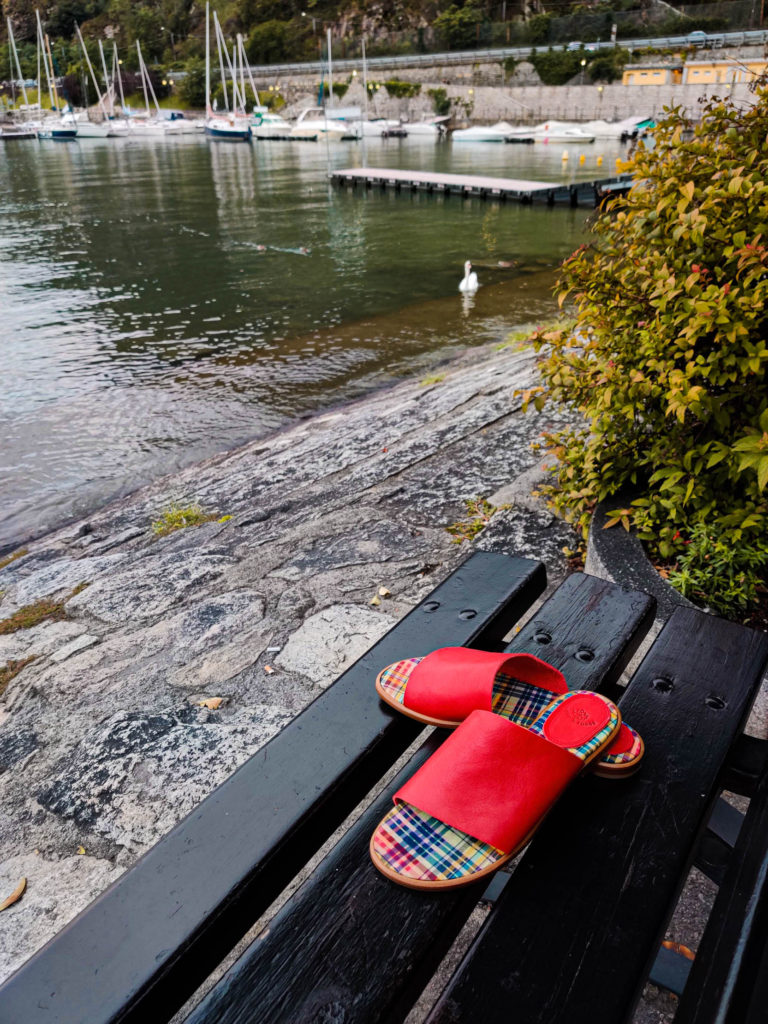
Rose’s Roses Shoes

Madewell Adrian Sunglasses
$65

Cropped Pant In Double Stretch Cotton
$162
>> Next: A Day Trip to Langhe, Piemonte: An Alternative to Tuscany
Follow SVADORE on:
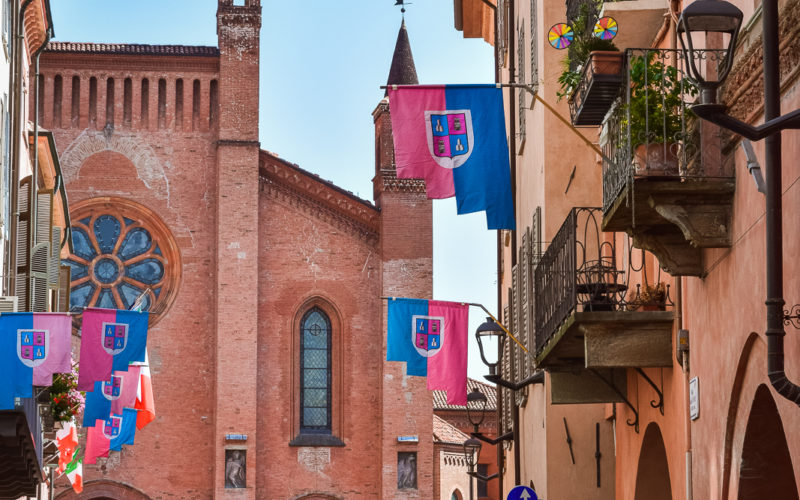
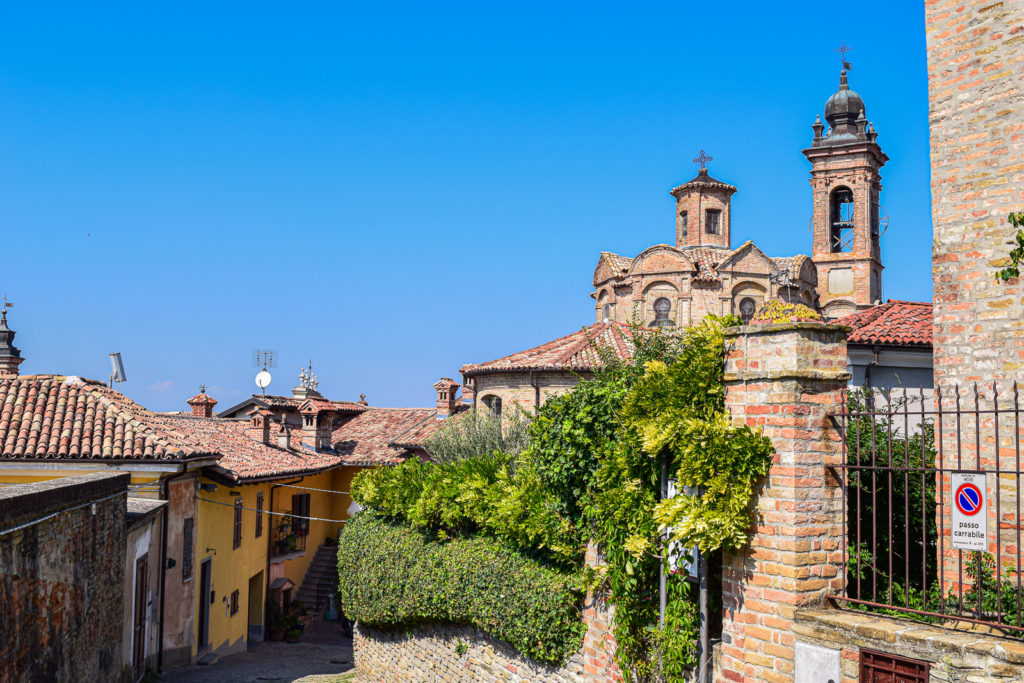
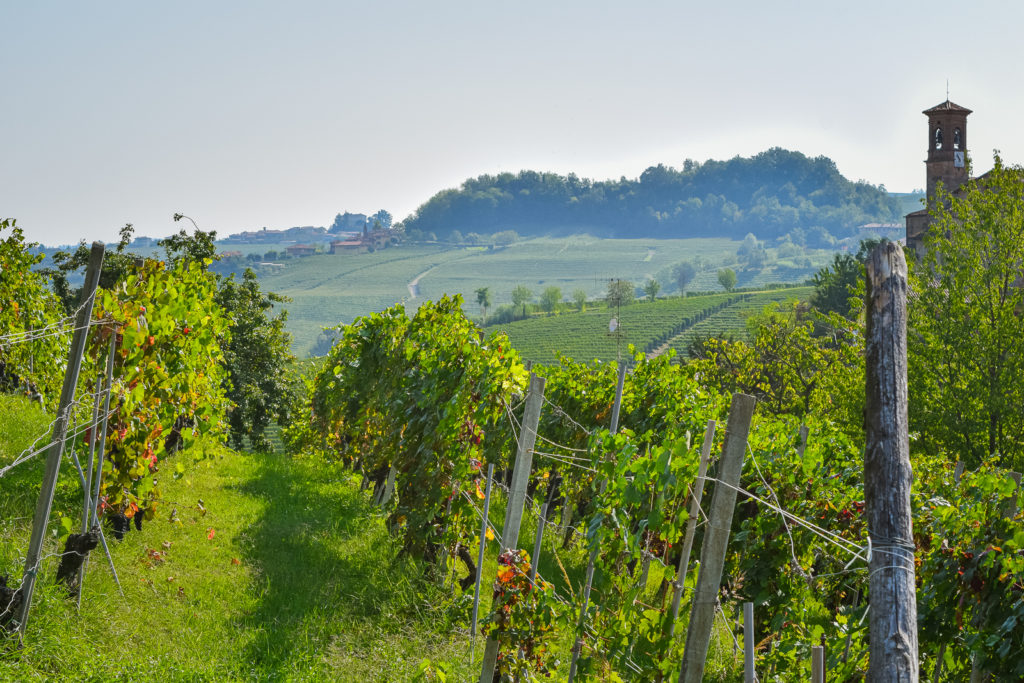
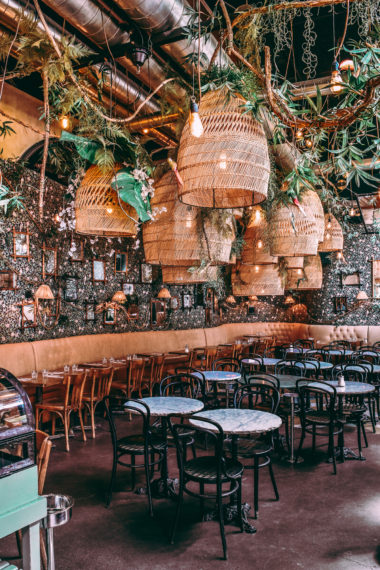
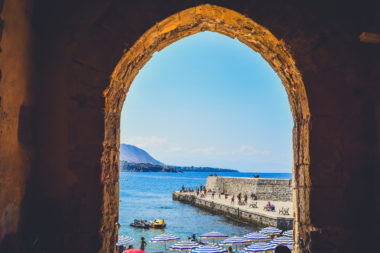

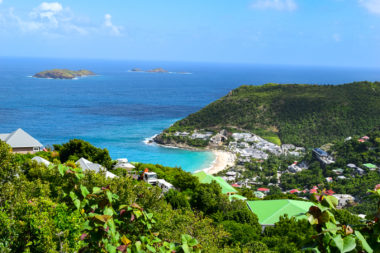
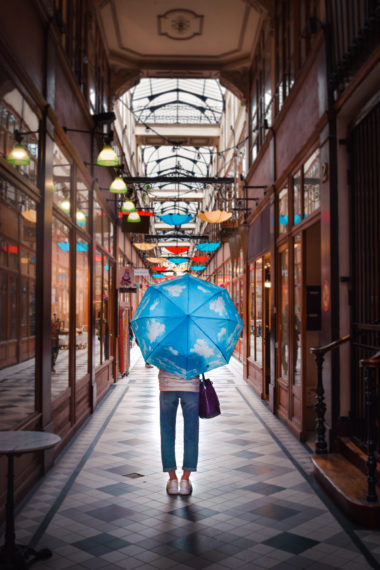
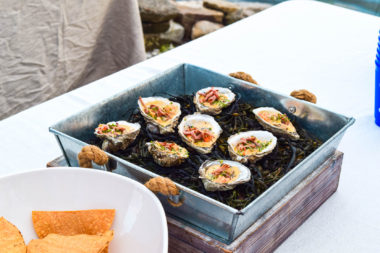

1 comment